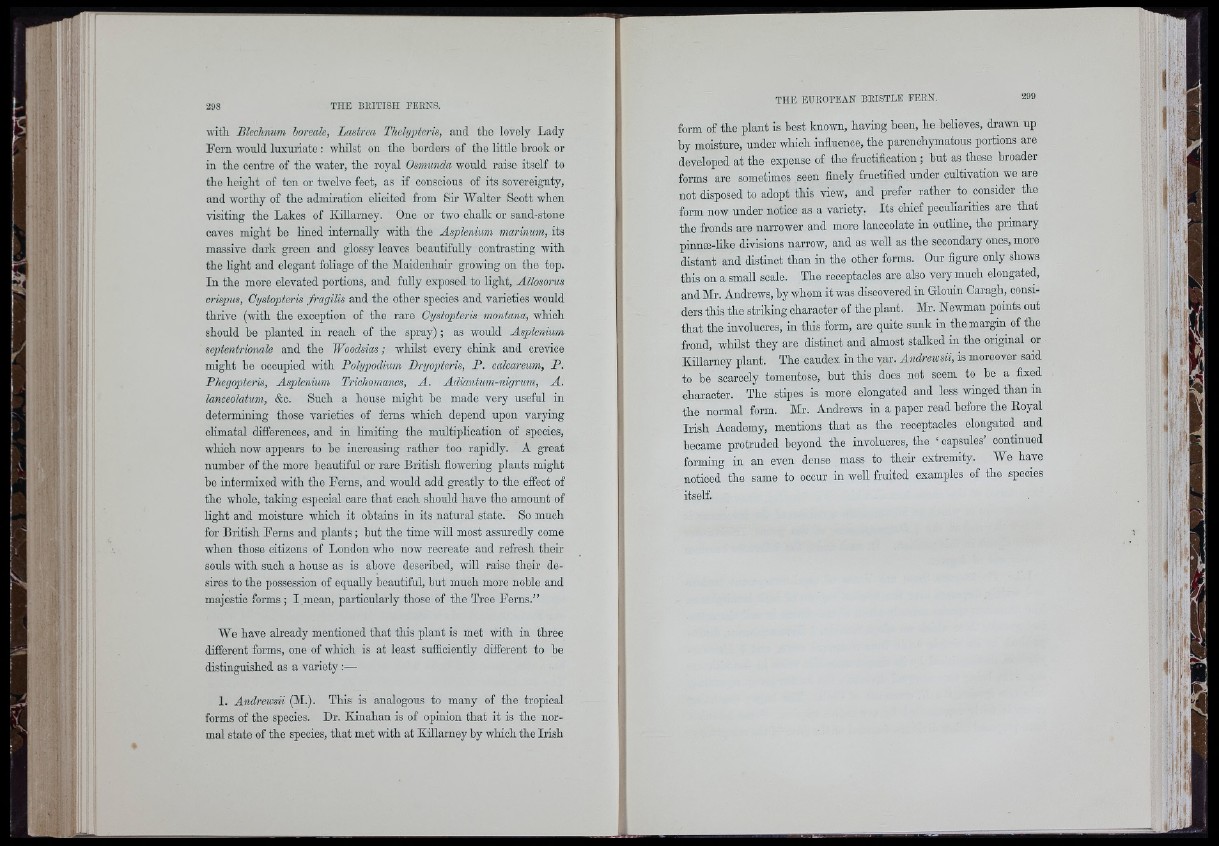
\il 1\
[
‘ [
'J 1
l i l i
ffl ■
298 THE BKITISH FERNS.
THE EUROFEAN BRISTLE FERN. 299
{:
fv
with Blechnum horeale, Lastrea Thelypteris, and tho lovely Lady
Fern would luxuriate: whilst on the borders of the little brook or
in the centre of the water, the royal Osmunda would raise itself to
the height of ten or twelve feot, as if conscious of its sovoreig-nty,
and worthy of the admiration elicited from Sir Walter Scott when
visiting tho Lakes of Killarney. One or two chalk or sand-stone
caves might be lined internally with the Asplenium marinum, its
massive dark green and glossy leaves beautifully contrasting with
the light and elegant foliage of the Maidenhair growing on tho top.
In the more elevated portions, and fuUy exposed to light, Allosorus
crispus, Cystopteris fragilis and the other species and varieties would
thrive (with the exception of the rare Cystopteris montana, which
should be planted iu reach of the spray); as would Asplenium
septentrionale and the Woodsias; whilst every chink and crevice
might be occupied with Polypodium Bryopteris, F. caloareum, P.
Phegopteris, Asplenium Trichomanes, A. Adiantum-nigrum, A.
lanceolatum, «&c. Such a house might he made very useful in
determining those varieties of ferns which depend upon varying
climatal differences, and in limitmg the multiplication of species,
which now appears to he increasing rather too rapidly. A great
number of the more beautiful or rare British flowering plants might
bo intermixed with the Ferns, and would add greatly to tho effect of
the whole, taking especial care that each should have the amount of
light and moisture which it obtains in its natural state. So much
for British Ferns and plants; but the time will most assuredly come
when those citizens of London who now recreate and refresh thoir
souls with such a house as is above described, will raise their desires
to the possession of equally beautiful, but much more noble and
majestic forms ; I mean, particularly those of the Tree Ferns.”
We have already mentioned that this plant is met with in three
different forms, one of which is at least sufficiently different to be
distinguished as a variety:—
1. Andreicsii (M.). This is analogous to many of the tropical
forms of the species. Dr. Kinahan is of opinion that it is the normal
state of the species, that met with at Killarney hy wliich the Irish
form of the plant is host known, having been, he believes, drawn up
by moisture, under which influence, the parenchymatous portions are
developed at the expense of the fructification ; but as these broader
forms are sometimes seen finely fructified under cultivation we are
not disposed to adopt this view, and prefer rather to consider the
form now under notice as a variety. Its chief peculiarities are that
the fronds are narrower and more lanceolate in outline, the primary
pinnai-lUce divisions narrow, and as well as tho secondary ones, moro
distant and distmot than in tho other forms. Our figure only shows
this on a small scale. The receptacles are also very much elongated,
and Mr. Andrews, by whom it was discovered in Glouin Caragh, considers
this the striking character of the plant. Mr. Newman points out
that the involucros, in this form, are quite sunk in the margin of the
frond, whilst they are distinct and almost stalked in the original or
Killarney plant. The caudox in tho var. Andrewsii, is moreover said
to be soaroely tomentose, but this does not seem to be a fixed
character. The stipes is more elongated and less winged than in
the normal form. Mr. Andrews in a paper read before the Eoyal
Irish Academy, mentions that as the receptacles elongated and
became protruded beyond the involucres, the ‘ capsules’ continued
forming in an even dense mass to their extremity. We have
noticed the same to occur in weU fruited examples of the species
itself.
.Him
ri'"- ril'll
t. 11
illi
^ -1
i
/i 1:
t-
! I-‘I
iji
•I i
r m
/pi 01
f f